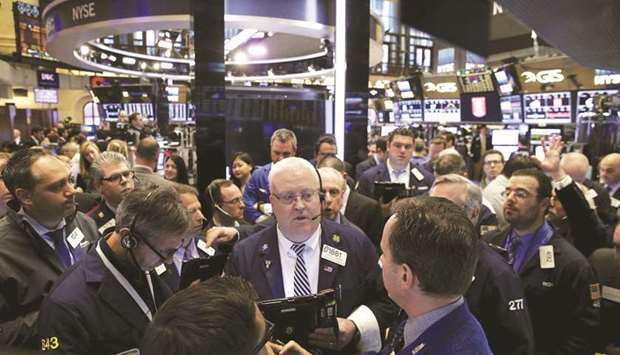The S&P 400 Mid-Cap index has surged to its best start to a year since 1991, both rewarding fund managers and forcing them to work harder to seek out bargains in a group that is now the most expensive part of the US market based on their historical averages.
The rally in mid-cap stocks — companies with a market valuation between $2bn and $10bn — has come during a broad rally in global stock markets as investors price in a resolution in the trade talks between the United States and China and fewer interest rate hikes by the Federal Reserve.
Mid-caps are up 14% for the year to date and sport an average price-to-earnings ratio of 16.9 times forward earnings, for their highest valuation premiums to small-cap stocks since 2017, according to Bank of America Merrill Lynch research.
Yet fund managers from Janus Henderson, Hotchkis & Wiley, and Fairpointe Capital are among those who are still finding values by concentrating on financial, energy and media stocks and eschewing the high-priced real estate investment trusts and utility companies that make up nearly a fifth of the benchmark index.
“The window for the big bargain bin was the fourth quarter and that was about it,” said Kevin Preloger, a portfolio manager of the $3.3bn Janus Henderson Mid Cap Value fund.”We’re looking for companies that have good balance sheets and good cash flow, but the tough part is reasonable valuations.”
Preloger’s fund is finding them in financial companies such as M&T Bank Corp and Hartford Financial Services Group Inc that are increasing their stock buybacks at the same time they have been beating analysts’ earnings expectations.
Shares of M&T, for instance, are up 20.8% since the start of the year and trade at a forward price-to-earnings ratio of 11.8. “Financials are the cheapest sector in the space, and their earnings are also growing,” Preloger said.
Stanley Majcher, a portfolio manager of the $1.4bn Hotchkis & Wiley Mid-Cap Value fund, is buying into overlooked financial and energy stocks because he considers them less risky than utility companies or REITs with higher valuations.
“Energy is very out of favour and there’s a perception that it’s a risky business because oil prices are likely to be low for a long period of time because of the market share war between Opec and the US,” he said. “But we see low volatility of demand and more discipline on the supply side.”
Among its largest holdings, Majcher’s fund has several energy companies, including Whiting Petroleum Corp, Kosmos Energy Ltd and Ophir Energy PLC, according to Morningstar data, with mixed results for the year to date.
Shares of Whiting are up 12.4% year-to-date, while shares of Ophir are up nearly 53% over the same time.
Thyra Zerhusen, a portfolio manager of the $2.6bn AMG Managers Fairpointe Mid Cap fund, said her fund is finding opportunities in media stocks such as broadcast company Tegna Inc, which was spun off of Gannett Co, magazine and local broadcasting company Meredith Corp, and New York Times Co, all of which should see a significant boost in revenues from the 2020 presidential and congressional elections, she said.
“With everybody running for president, the political advertising goes to these smaller market stations. Newspapers are almost non-existent now,” except for the New York Times, which continues to grow its digital subscriptions, she said.
She is also adding opportunistic positions in companies such as Westinghouse Air Brake Technologies Corp, which completed its merger with the transportation unit of General Electric Co on February 25.
Shares of the company are up 2.9% year-to-date, and remain 35% below where they were trading six months ago.
“We’re trying to add stocks where there may be a short-term problem hitting the share price but the long-term outlook looks okay,” she said.

Traders work on the floor of the New York Stock Exchange (file). The S&P 400 Mid-Cap index has surged to its best start to a year since 1991, both rewarding fund managers and forcing them to work harder to seek out bargains in a group that is now the most expensive part of the US market based on their historical averages.
